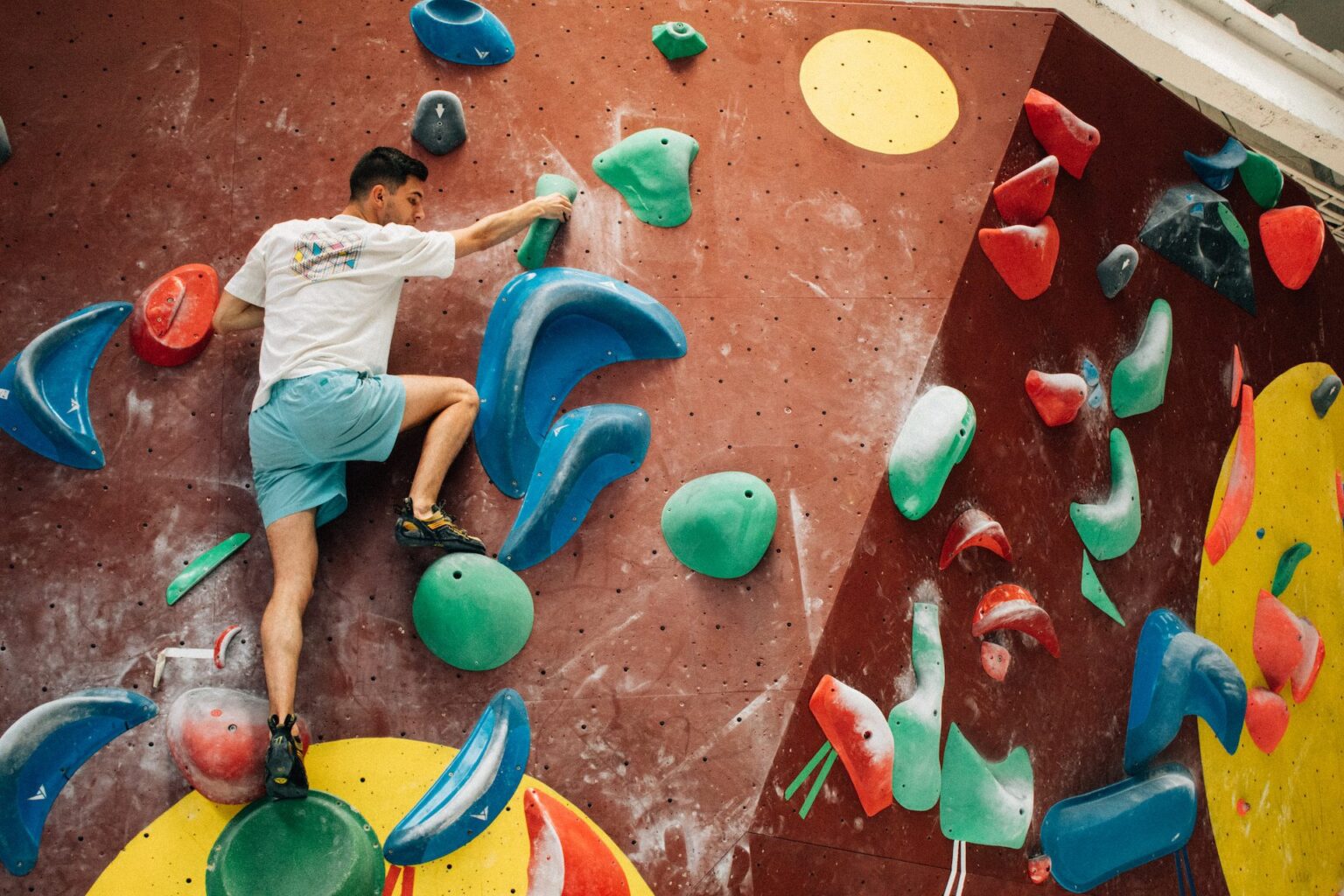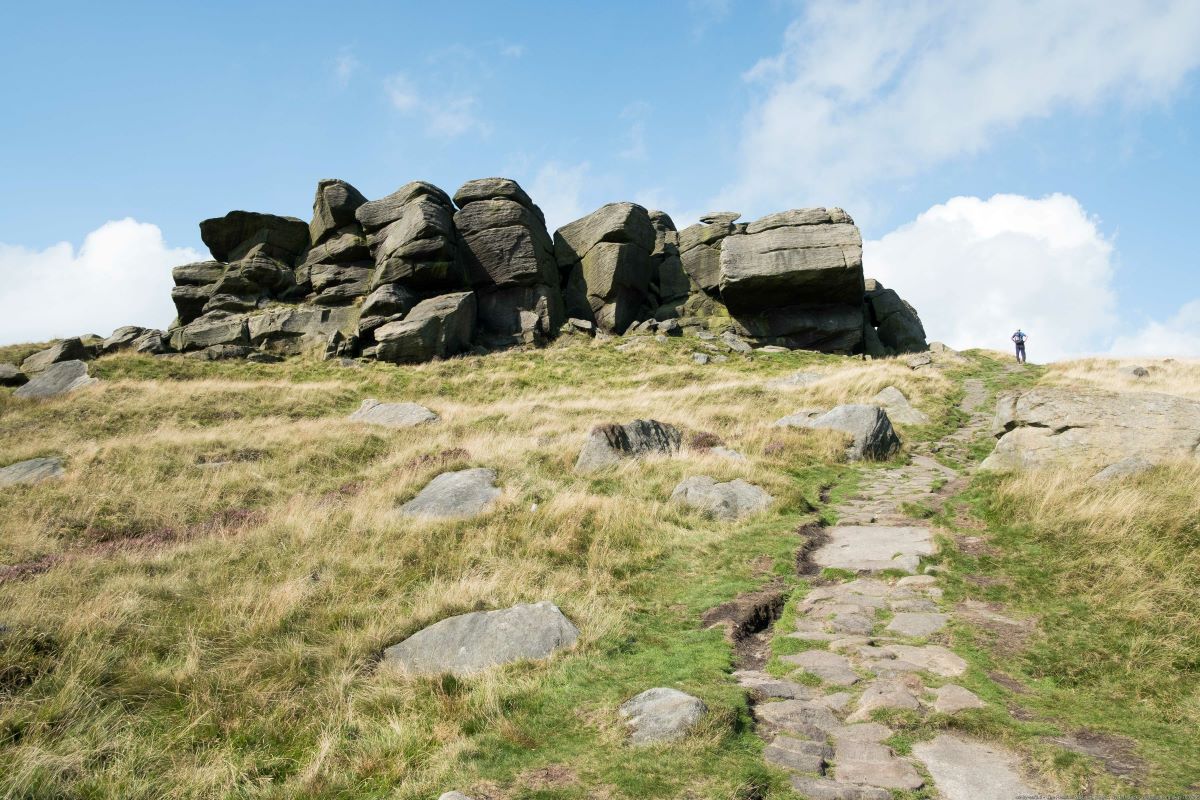Understanding bouldering grades is vital to climbing, whether you’re an expert tackling challenging routes or a beginner just getting started. It’s not simply about knowing the labels like V2 and V5; it’s about recognizing what each grade signifies regarding challenge and skill level. This guide is designed to demystify bouldering grades, providing a clear and comprehensive resource for climbers of all levels. Are you ready to enhance your climbing knowledge and confidence? Let’s get started!
The Main Bouldering Grade Systems
One cannot delve into the realm of bouldering without coming across the terms “V scale” and “Font scale.” These two grading systems are widely used to assess the level of difficulty in bouldering problems. However, understanding them is often a riddle in itself. Let’s untangle these systems.
The V Scale
The V scale is a widely accepted grading system primarily used in the United States. Developed by John Sherman, aka “Vermin,” this system assesses the technical difficulty and physical demands of a bouldering problem. The grades range from V0 (easiest) to V17 (most difficult). As a climber progresses from V0 to V17, each step up signifies increased complexity and challenge. Advanced climbers typically climb routes graded V10 and above.
The Font Scale
Across the pond, European climbers often use the Font scale. Originating from Fontainebleau, a famous bouldering area in France, this system is renowned worldwide for its precision in grading outdoor bouldering problems. The Font scale starts at 1A and ascends to 9C, with the addition of “+” or “-” signs to fine-tune the difficulty level within a grade. It’s not unusual for climbers to find that a problem rated 6B+ on the Font scale feels more challenging than a V4 on the V scale, underscoring the fact that difficulty can often be subjective.
Grade Conversion
Navigating these two grading systems can be challenging for even the most experienced climbers. However, a conversion chart can make things easier. Let’s look at an conversion graphic between these two main systems:
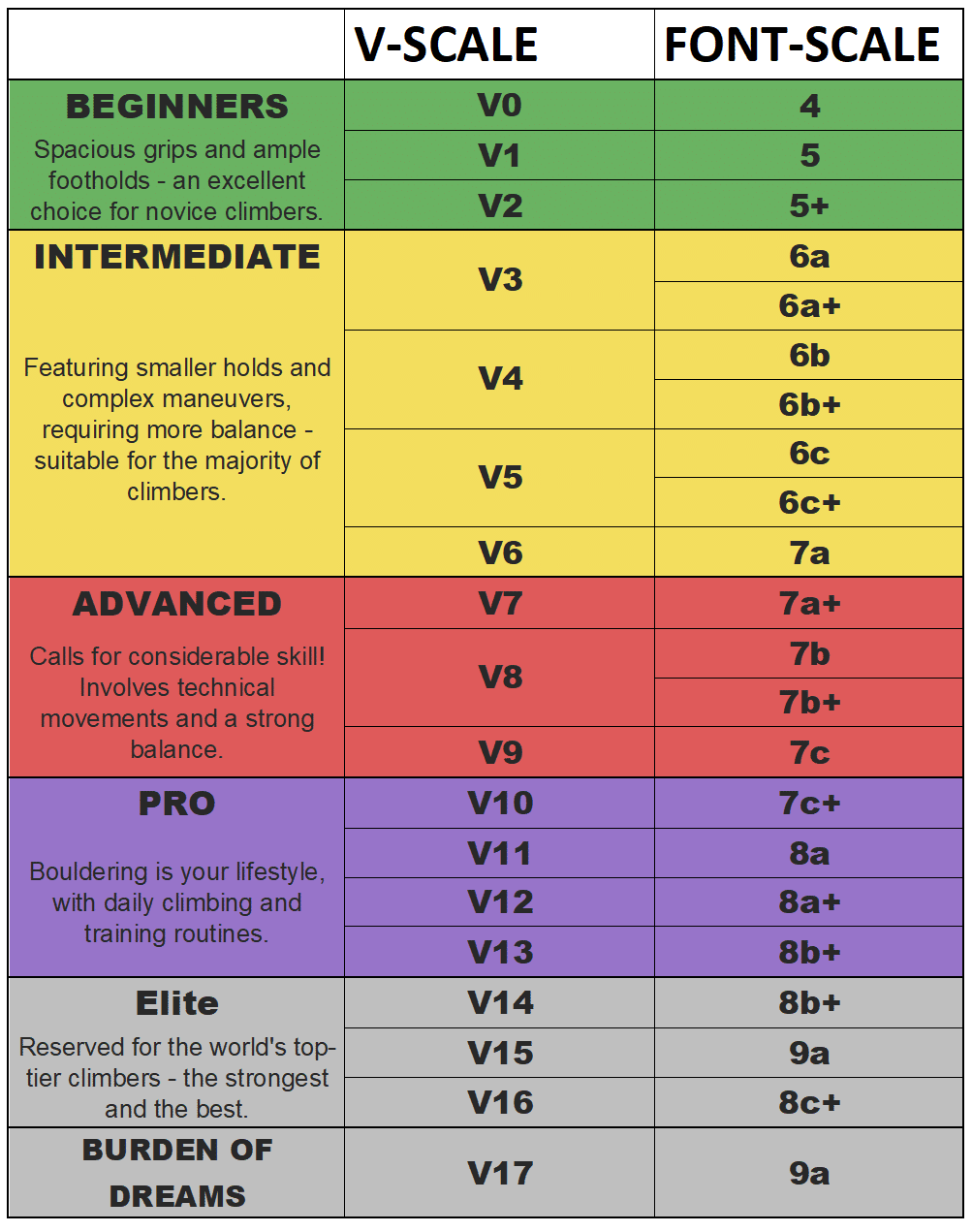
Please note that this table provides a simplified conversion, and there might be slight variations depending on factors such as climbing style or location. Despite these differences, understanding these two primary bouldering grading systems will provide you with a broad sense of your climbing level and potential progression. By comprehending the grading systems, we can embrace the challenges of each bouldering problem, armed with the knowledge of what each grade represents.
Assessing the Difficulty and Quality of Climbing Routes
While bouldering grades provide a fundamental understanding of a climbing problem’s difficulty, there are other aspects that contribute to the true complexity of a climb. Let’s explore these factors, ranging from adjectival grades to different grading systems used in outdoor climbing and traditional (trad) climbing routes.
The Role of Upper Body Strength
Bouldering isn’t merely about the grade; it’s also a test of your upper body strength. This includes your arms, shoulders, and, most importantly, fingers. A climb graded V4 might seem doable on paper, but once you’re on the rock, you might find that it requires significant upper body strength to navigate and complete. This can be a true test of your strength-to-weight ratio, grip strength, and muscle endurance. So, while the grades serve as a guideline, it’s important to remember that each climb will bring unique physical challenges.
Adjectival Grades
While we’ve focused primarily on bouldering grades, let’s take a detour to visit the world of outdoor and trad climbing routes. Here, we often encounter what are known as adjectival grades. These grades, common in British climbing, attempt to summarize the overall difficulty of a route. They consider factors such as the technical difficulty, the strength required, the potential danger, and the stamina needed to complete the climb. For instance, a “Hard Very Severe (HVS)” grade tells you you’re in for a challenging climb that’s likely to test your abilities on multiple fronts.
Outdoor and Trad Climbing Routes
Outdoor and trad climbing routes also present different challenges compared to indoor bouldering. From unpredictable weather to the need for proper gear placement in trad climbing, the grades for these routes often incorporate these additional factors. It’s not just about the physical and technical challenges of the climb but also about dealing with the environmental and mental aspects that outdoor and trad climbing brings.
In conclusion, while bouldering grades are integral to understanding the difficulty level, it’s essential to remember that other factors also come into play. Whether it’s your physical strength or the climbing you’re undertaking, each plays a unique role in determining the actual difficulty of a climb.

Decoding Bouldering Difficulty Levels
Bouldering difficulty levels can often seem like a maze to beginners and experienced climbers alike. Between single grades and grade ranges, how do these factors contribute to understanding the true difficulty of a bouldering problem?
Single Grade vs. Grade Range
In the bouldering world, you might come across climbs rated with a single grade or a grade range. A single grade, such as V4 or 6B, provides a straightforward assessment of a climb’s difficulty. This is generally used when the consensus about the problem’s difficulty is well-established among the climbing community.
On the other hand, a grade range (like V4-V5 or 6B-6C) indicates a spectrum of difficulty. The climb’s difficulty may vary depending on individual climbing styles, physical attributes, and conditions on the day. In this case, a wider grade range suggests greater variability in the problem’s difficulty.
Climbing Grades and Difficulty Levels
Different climbing grades correspond to distinct levels of difficulty. For example, in the V scale, a V0 signifies a beginner-friendly problem, while a V10 indicates a problem for advanced climbers. The gap between each grade is not uniform and can be perceived differently based on a climber’s skill level and experience. As the grades increase, the jumps in difficulty levels might feel more significant.
Understanding climbing grades and their corresponding difficulty levels is crucial for progression in bouldering. It helps you assess your current ability, set appropriate goals, and track your improvement over time.
In summary, the world of bouldering grades is more complex than it may initially appear. From single grades to grade ranges and understanding their corresponding difficulty levels, each aspect contributes to a more comprehensive understanding of bouldering challenges.
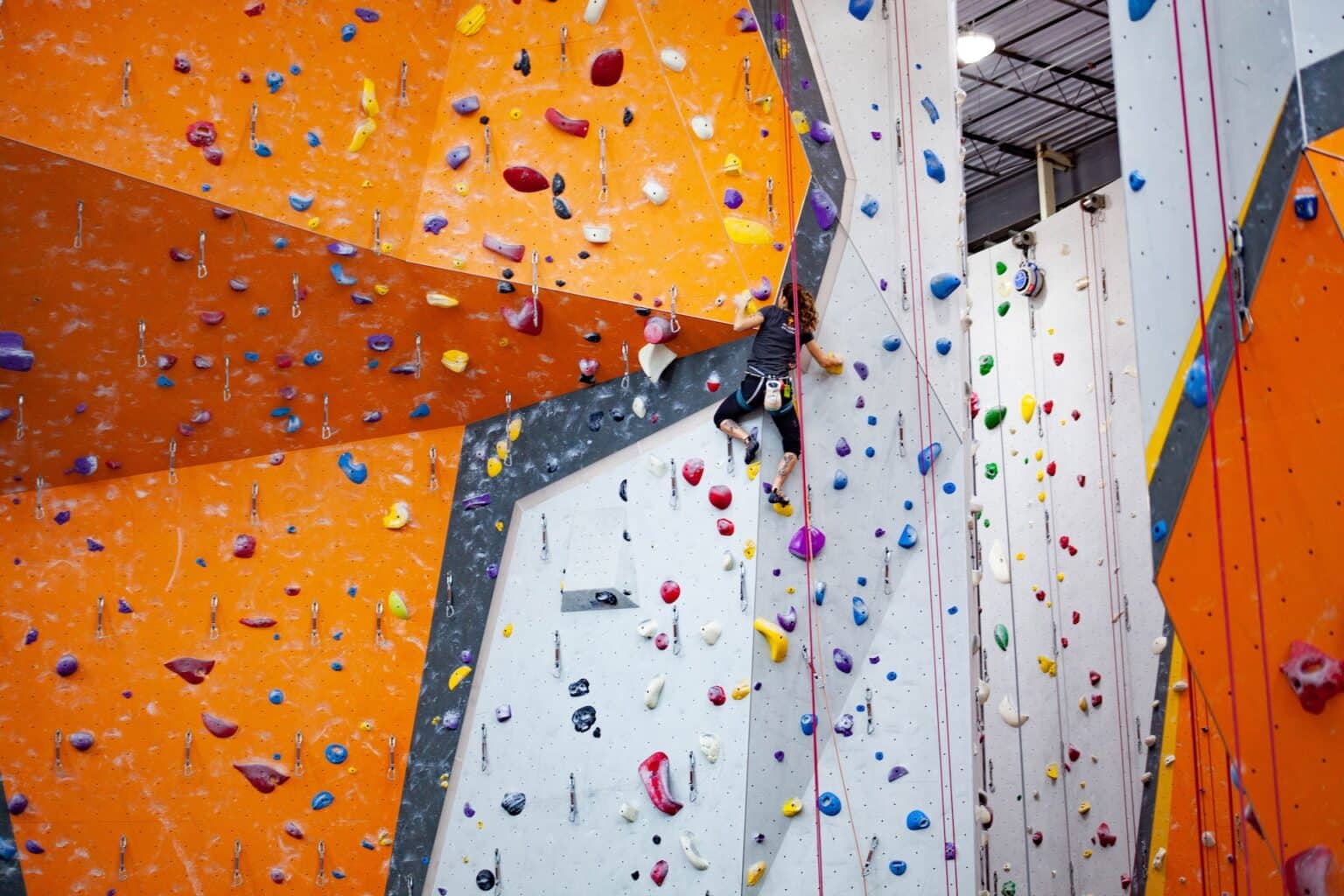
Challenges and Accomplishments in Bouldering
The world of bouldering is filled with monumental challenges and awe-inspiring accomplishments. Let’s delve into these fascinating aspects of the sport, from conquering the hardest boulder problems to witnessing the natural progression of bouldering.
Hardest Boulder Problems
Throughout the years, experienced climbers have pushed the limits of what’s possible in bouldering, achieving impressive feats on some of the world’s most difficult problems. For instance, “Burden of Dreams,” a problem in Finland, currently holds the highest difficulty grade of V17. Climbed only by Nalle Hukkataival in 2016 and recently by Will Bosi in April 2023, it is an emblem of the sheer determination and advanced skill level that bouldering demands.
Progression in Bouldering
Progression in bouldering is an incredibly satisfying journey, but it only sometimes follows a linear path. It’s common for climbers to find quick advancement through the initial grades, but the progression can slow down as they reach more advanced levels. For instance, moving from V4 to V5 might take less time than progressing from V9 to V10.
Statistic Relevance
To put it in perspective, a survey conducted by the Climbing Business Journal in 2020 revealed that most indoor boulderers climbed at a V4 level, while only about 6% climbed V7 or higher. This illustrates the significant increase in difficulty as you progress up the grading scale.
Exploring the realm of bouldering’s hardest problems and understanding the progression in the sport provides a deeper insight into the challenges and achievements within this captivating discipline. It serves as a testament to the physical demands and mental resilience required in this sport.
Bouldering Grades Across the Globe
Even though the V scale and the Font Scale are widely used and recognized, bouldering grading systems can vary significantly across different regions and countries, reflecting the diversity and evolution of the sport worldwide.
The Peak District
Let’s first travel to the UK, specifically to the crags of the Peak District. Here, the British Trad Grade system holds sway. It incorporates two elements: the adjectival grade (which assesses the overall difficulty, danger, and seriousness of the route) and the technical grade (which gauges the most challenging part). This dual approach provides a more rounded perspective of a route’s challenge.
Bouldering in the Peak District provides climbers of all skill levels with diverse challenges across rugged gritstone edges and unique limestone crags. It’s a top destination for enthusiasts. If you’re intrigued by the prospect of bouldering in the Peak District, explore my blog post detailing the various unique bouldering spots across this stunning region.

“Ramshaw Rocks“, by Mick Lobb, licensed under CC BY-SA 2.0
The Broader Picture
Moving onto other parts of the world, Australia uses the Ewbank system, named after John Ewbank, the climber who introduced it. This numerical system is simple and efficient, eschewing subjective criteria like psychological difficulty and focusing solely on physical difficulty.
In South Africa, you’ll encounter the South African grading system, which resembles the Ewbank system but has a few unique grade labels for low-end climbs.
Meanwhile, in Brazil, climbers follow the Brazilian grade system, which combines aspects of the Font and V grading systems to cater to the country’s unique climbing landscape.
Understanding these diverse grading systems can enhance your appreciation for the global nature of bouldering and highlight the distinctiveness of climbing landscapes worldwide. No matter where your climbing adventures take you, remember that grades are a guide, not a rigid rulebook. The absolute joy of bouldering lies in the challenge, the community, and the great outdoors.
History of Bouldering Grades
The grading systems that we use and rely on today are a product of the pioneering efforts of climbers who sought a way to communicate the complexity of bouldering problems. The history of bouldering grades, steeped in the vision of John Gill and John Sherman, is a testament to the evolution of the sport.
The Birth of Bouldering Grades
Before grading systems were established, climbers needed a common language to describe the difficulty of bouldering problems. The need for a more standardized, uniform rating system became apparent as bouldering grew in popularity, leading to the birth of technical grades.
John Gill and the Emergence of Technical Grades
A renowned American boulderer, John Gill, was among the first to perceive bouldering as a distinct discipline. Before Gill, bouldering was primarily viewed as training for larger ascents. In the late 1950s and early 1960s, Gill introduced technical grades for bouldering, adding a new dimension to the sport.
John Sherman and the V Scale
The next significant development came in the late 1980s at Hueco Tanks in Texas. Here, climber John Sherman introduced the V scale, one of North America’s most widely used grading systems today. The V scale provided a more detailed evaluation of a problem’s difficulty, transforming how boulderers communicate about their sport.
The evolution of bouldering grades, from the seminal work of John Gill to the introduction of the V scale by John Sherman, has shaped the landscape of modern bouldering. These developments have standardized communication within the climbing community and made the sport more accessible and understandable for newcomers.
Frequently Asked Questions
Navigating the bouldering world can raise a host of questions, especially for those new to the sport or those advancing to higher levels. Here, we’ll answer some of the most frequently asked queries, shedding light on everything from respectable bouldering grades to the strength needed for bouldering.
What is a respectable bouldering grade?
The term “respectable” can vary significantly from person to person, as it’s largely dependent on individual goals, fitness levels, and experience. However, in the community, climbing at a V4 or V5 level on the V scale is often seen as a point where one transition from beginner to intermediate.
What grade should a beginner be in bouldering?
Beginners often start within the V0 to V2 range. It provides an excellent platform for developing essential climbing techniques and building strength without overstraining the body.
How strong do you need to be for bouldering?
Bouldering requires physical strength (particularly upper body and core), flexibility, and balance. However, it’s not solely about raw strength. Efficient climbing techniques, problem-solving skills, and endurance play an equally, if not more, important role.
How fast should you progress in bouldering?
Progression speed can vary widely among individuals due to previous climbing experience, overall fitness, frequency of climbing, and ability to master techniques. Some may see a fast progression through the initial grades, while advancement at higher grades requires more dedicated training and time.
Whether you’re a seasoned boulderer or just stepping into the fascinating world of climbing, it’s important to remember that climbing is not just about grades. It’s about personal improvement, enjoyment, and bouldering’s thrilling journey. Enjoy your climb!
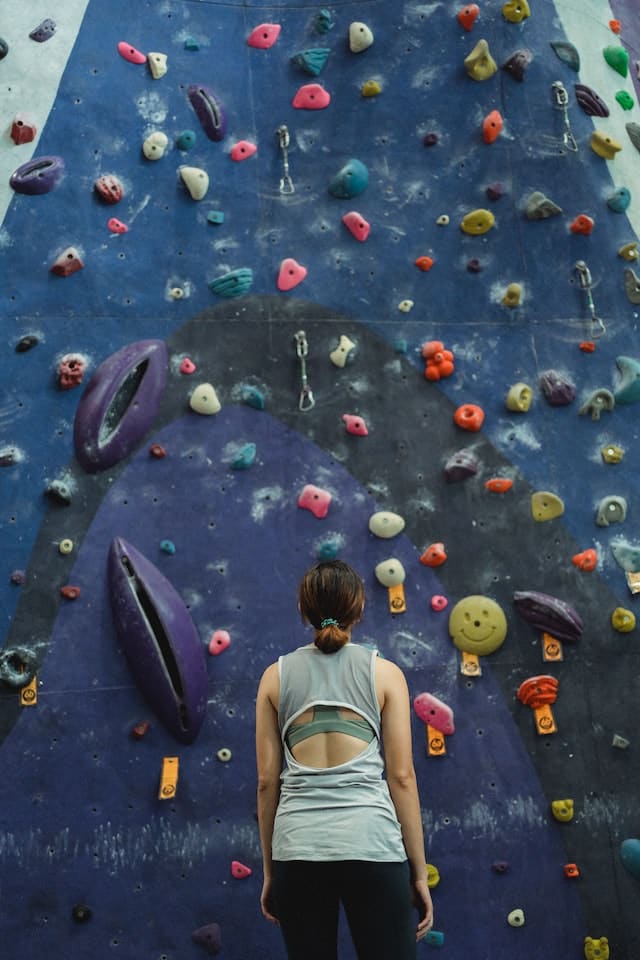
Conclusion
Understanding bouldering grades is integral to embarking on and progressing in your climbing journey. This comprehensive guide has walked you through everything you need to know about bouldering grades, from the history behind the V and Font scales to the intricacies of converting between the two primary grading systems.
We’ve delved into the role of upper body strength in determining climbing routes and the diversity of grading systems across the globe. Our discussion of bouldering difficulty levels and the transition from single to range grades will give you a clearer perspective. We’ve also shed light on the challenges and accomplishments that form the rich tapestry of this dynamic sport.
Looking to improve your bouldering skills? Check out these 13 essential bouldering tips that will help you climb like a pro.
Regardless of your difficulty or experience, remember bouldering is about pushing your limits, enjoying the journey, and constantly evolving. Happy climbing!

